Connect With Us
Blog
Items filtered by date: January 2024
Treatment Options for Clubfoot
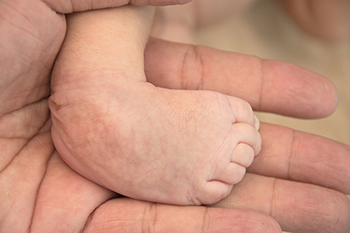
The congenital deformity of clubfoot is characterized by a permanent twist in the foot and ankle. Typically diagnosed at birth, clubfoot results from overly tight ligaments and tendons, causing the foot to assume an abnormal position reminiscent of the head of a golf club. For mild cases identified within the first two weeks of birth, casting emerges as a successful non-surgical option. Employing the Ponseti method, this technique involves gradual stretching of the foot into a more normal position, secured by the cast. Over a span of six to eight weeks, this method can correct clubfoot without the need for surgery. This proves particularly advantageous for infants and cases of mild deformities. Severe clubfoot cases in both babies and older patients may necessitate surgical intervention. It may involve Achilles tendon lengthening, tissue release, and, in some instances, a tendon transfer to facilitate improved foot mobility. A cast plays a vital role in the recovery process and may be worn for up to three months to support the healing of incisions, tendons, and bones. Replacements may be necessary, especially for growing infants, ensuring that post-removal, the foot exhibits more normalized appearance and functionality. It is suggested that you schedule an appointment with a podiatrist to determine the most suitable clubfoot treatment.
Congenital foot problems require immediate attention to avoid future complications. If you have any concerns, contact one of our podiatrists of Bergen Foot & Ankle. Our doctors can provide the care you need to keep you pain-free and on your feet.
Congenital foot problems are deformities affecting the feet, toes, and/or ankles that children are born with. Some of these conditions have a genetic cause while others just happen. Some specific foot ailments that children may be born with include clubfeet, polydactyly/macrodactyly, and cleft foot. There are several other foot anomalies that can occur congenitally. What all of these conditions have in common is that a child may experience difficulty walking or performing everyday activities, as well as trouble finding footwear that fits their foot deformity. Some of these conditions are more serious than others. Consulting with a podiatrist as early as possible will help in properly diagnosing a child’s foot condition while getting the necessary treatment underway.
What are Causes of Congenital Foot Problem?
A congenital foot problem is one that happens to a child at birth. These conditions can be caused by a genetic predisposition, developmental or positional abnormalities during gestation, or with no known cause.
What are Symptoms of Congenital Foot Problems?
Symptoms vary by the congenital condition. Symptoms may consist of the following:
- Clubfoot, where tendons are shortened, bones are shaped differently, and the Achilles tendon is tight, causing the foot to point in and down. It is also possible for the soles of the feet to face each other.
- Polydactyly, which usually consists of a nubbin or small lump of tissue without a bone, a toe that is partially formed but has no joints, or an extra toe.
- Vertical talus, where the talus bone forms in the wrong position causing other bones in the foot to line up improperly, the front of the foot to point up, and the bottom of the foot to stiffen, with no arch, and to curve out.
- Tarsal coalition, when there is an abnormal connection of two or more bones in the foot leading to severe, rigid flatfoot.
- Cleft foot, where there are missing toes, a V-shaped cleft, and other anatomical differences.
- Macrodactyly, when the toes are abnormally large due to overgrowth of the underlying bone or soft tissue.
Treatment and Prevention
While there is nothing one can do to prevent congenital foot problems, raising awareness and receiving neonatal screenings are important. Early detection by taking your child to a podiatrist leads to the best outcome possible.
If you have any questions please feel free to contact our offices located in Fort Lee, NJ and Flushing, NY . We offer the newest diagnostic tools and technology to treat your foot and ankle needs.
Mobility Concerns Among the Elderly
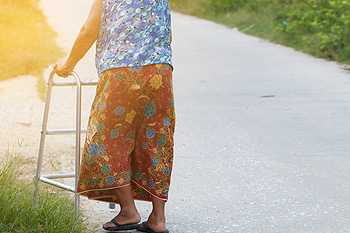
Mobility is a critical aspect of maintaining independence and overall well-being as people age. Concerns about losing the ability to move freely can be a source of anxiety for many older adults. Factors such as changes in gait, balance, and physical strength can impact mobility, leading to increased falls and limitations in daily activities. This loss of mobility is associated with higher rates of disease, disability, hospitalization, and decreased quality of life. If you are a senior or taking care of one and want to learn more about what you can do to maintain mobility in terms of proper gait and balance, it is suggested that you schedule an appointment with a podiatrist to increase your chances of living independently and enjoying a good quality of life.
Proper foot care is something many older adults forget to consider. If you have any concerns about your feet and ankles, contact one of our podiatrists from Bergen Foot & Ankle. Our doctors can provide the care you need to keep you pain-free and on your feet.
The Elderly and Their Feet
As we age we start to notice many changes in our body, but the elder population may not notice them right away. Medical conditions may prevent the elderly to take notice of their foot health right away. Poor vision is a lead contributor to not taking action for the elderly.
Common Conditions
- Neuropathy – can reduce feeling in the feet and can hide many life-threatening medical conditions.
- Reduced flexibility – prevents the ability of proper toenail trimming, and foot cleaning. If left untreated, it may lead to further medical issues.
- Foot sores – amongst the older population can be serious before they are discovered. Some of the problematic conditions they may face are:
- Gouging toenails affecting nearby toe
- Shoes that don’t fit properly
- Pressure sores
- Loss of circulation in legs & feet
- Edema & swelling of feet and ankles
Susceptible Infections
Diabetes and poor circulation can cause general loss of sensitivity over the years, turning a simple cut into a serious issue.
If you have any questions please feel free to contact our offices located in Fort Lee, NJ and Flushing, NY . We offer the newest diagnostic and treatment technologies for all your foot and ankle needs.
Causes and Symptoms of Foot Discomfort During Pregnancy
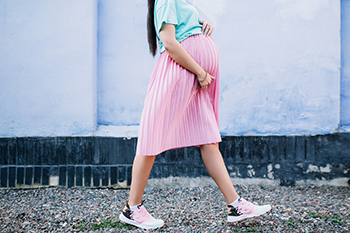
Pregnancy brings about numerous changes in a woman's body, and foot discomfort often becomes a notable concern. One primary cause is the increased weight and pressure exerted on the feet due to the growing baby. This added stress can lead to swelling, commonly known as edema, making shoes feel tighter. Hormonal changes during pregnancy affect ligaments, potentially resulting in flat feet or overpronation, which can cause discomfort. Additionally, fluid retention can contribute to a feeling of heaviness and puffiness in the feet. As the pregnancy progresses, the body produces a hormone called relaxin, which loosens ligaments in preparation for childbirth, potentially impacting foot arches and stability. Common symptoms include swelling, aching, and changes in foot shape. Choosing supportive footwear, elevating the feet when possible, and staying physically active can help alleviate these discomforts and promote overall foot health during pregnancy. If you are experiencing foot pain during your pregnancy, it is strongly suggested that you seek the advice of a podiatrist who can guide you toward effective relief tips.
Pregnant women with swollen feet can be treated with a variety of different methods that are readily available. For more information about other cures for swollen feet during pregnancy, consult with one of our podiatrists from Bergen Foot & Ankle. Our doctors will attend to all of your foot and ankle needs.
What Foot Problems Can Arise During Pregnancy?
One problem that can occur is overpronation, which occurs when the arch of the foot flattens and tends to roll inward. This can cause pain and discomfort in your heels while you’re walking or even just standing up, trying to support your baby.
Another problem is edema, or swelling in the extremities. This often affects the feet during pregnancy but tends to occur in the later stages.
How Can I Keep My Feet Healthy During Pregnancy?
- Wearing orthotics can provide extra support for the feet and help distribute weight evenly
- Minimize the amount of time spent walking barefoot
- Wear shoes with good arch support
- Wear shoes that allow for good circulation to the feet
- Elevate feet if you experience swelling
- Massage your feet
- Get regular, light exercise, such as walking, to promote blood circulation to the feet
If you have any questions please feel free to contact our offices located in Fort Lee, NJ and Flushing, NY . We offer the newest diagnostic and treatment technologies for all your foot and ankle needs.
Common Sources of Foot Pain
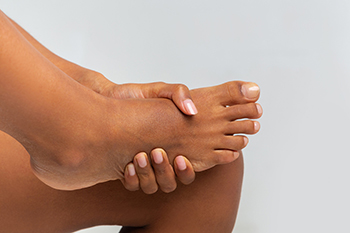
For most people over the age of 50, foot pain is a common experience, affecting approximately 20 percent of older adults. Contributing factors include excess weight, inappropriate footwear, and the natural wear and tear associated with aging. However, it is essential not to dismiss foot pain, as research suggests it can compromise balance and foot function, and increase the risk of falls. Distinguishing between muscle soreness from activity and sharp pain originating from bones or joints is important. If experiencing the latter, seeking help from a medical professional is imperative. Several types of foot pain warrant such attention. Stress fractures, prevalent in older adults, manifest as pain during activity that subsides with rest. Persistent heel pain, such as plantar fasciitis, may require evaluation from a podiatrist if it persists despite rest. Psoriatic arthritis, characterized by joint pain and swelling, often accompanied by psoriasis symptoms, requires attention. Neuropathy, frequently linked to diabetes but with various causes, demands investigation for symptoms like tingling, burning, or foot numbness. If you are experiencing persistent or sharp foot pain it is suggested that you schedule an appointment with a podiatrist for a diagnosis and tailored treatment plan.
Foot Pain
Foot pain can be extremely painful and debilitating. If you have a foot pain, consult with one of our podiatrists from Bergen Foot & Ankle. Our doctors will assess your condition and provide you with quality foot and ankle treatment.
Causes
Foot pain is a very broad condition that could be caused by one or more ailments. The most common include:
- Bunions
- Hammertoes
- Plantar Fasciitis
- Bone Spurs
- Corns
- Tarsal Tunnel Syndrome
- Ingrown Toenails
- Arthritis (such as Gout, Rheumatoid, and Osteoarthritis)
- Flat Feet
- Injury (from stress fractures, broken toe, foot, ankle, Achilles tendon ruptures, and sprains)
- And more
Diagnosis
To figure out the cause of foot pain, podiatrists utilize several different methods. This can range from simple visual inspections and sensation tests to X-rays and MRI scans. Prior medical history, family medical history, and any recent physical traumatic events will all be taken into consideration for a proper diagnosis.
Treatment
Treatment depends upon the cause of the foot pain. Whether it is resting, staying off the foot, or having surgery; podiatrists have a number of treatment options available for foot pain.
If you have any questions, please feel free to contact our offices located in Fort Lee, NJ and Flushing, NY . We offer the newest diagnostic and treatment technologies for all your foot care needs.
Gout Pain Can Be Managed
Definition and Affected Population of Sever’s Disease
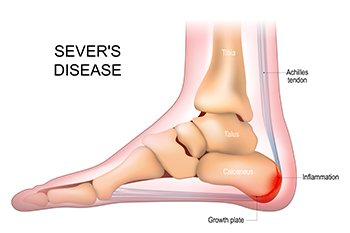
Sever's disease, a common but often misunderstood condition, is not truly a disease, but rather a growth-related heel pain that affects active children and adolescents. This condition, also known as calcaneal apophysitis, occurs when the growth plate at the back of the heel becomes inflamed due to repetitive stress and tension. Children between the ages of 8 and 15 are most susceptible to Sever's disease, as this is typically when their bones are rapidly growing. This growth spurt places extra stress on the heel's growth plate, especially in active children who participate in sports or activities that involve running and jumping. The hallmark symptom of Sever's disease is heel pain, often exacerbated by physical activity. This pain can be particularly bothersome during or after exercise. Understanding Sever's disease is essential for parents and young athletes, as it enables early recognition and appropriate management. If your active child has heel pain, it is suggested that you consult a podiatrist who can effectively diagnose and treat Sever’s disease.
Sever's disease often occurs in children and teens. If your child is experiencing foot or ankle pain, see one of our podiatrists from Bergen Foot & Ankle. Our doctors can treat your child’s foot and ankle needs.
Sever’s Disease
Sever’s disease is also known as calcaneal apophysitis, which is a medical condition that causes heel pain I none or both feet. The disease is known to affect children between the ages of 8 and 14.
Sever’s disease occurs when part of the child’s heel known as the growth plate (calcaneal epiphysis) is attached to the Achilles tendon. This area can suffer injury when the muscles and tendons of the growing foot do not keep pace with bone growth. Therefore, the constant pain which one experiences at the back of the heel will make the child unable to put any weight on the heel. The child is then forced to walk on their toes.
Symptoms
Acute pain – Pain associated with Sever’s disease is usually felt in the heel when the child engages in physical activity such as walking, jumping and or running.
Highly active – Children who are very active are among the most susceptible in experiencing Sever’s disease, because of the stress and tension placed on their feet.
If you have any questions, please feel free to contact our offices located in Fort Lee, NJ and Flushing, NY . We offer the newest diagnostic and treatment technologies for all your foot and ankle injuries.

